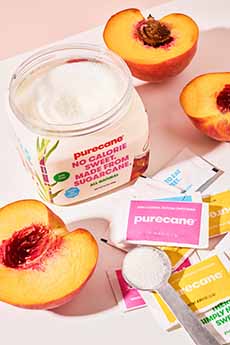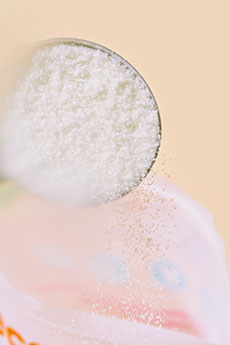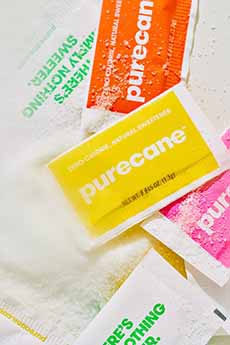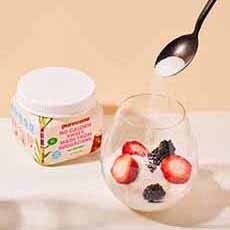PRODUCT: Purecane Zero-Calorie, All Natural Sugar Substitute
|
Last December, Amyris, a biotech company and a leader in the development and production of sustainable ingredients for health and wellness and other categories, launched PURECANE™ Brand Sweetener, a zero-calorie alternative to established brands. Launched on Purecane.com, and on Amazon. Our brother is one of the millions of people who struggle to reduce the amount of added sugar that they consume, particularly on cereal and in coffee and tea. He tried all the supermarket with the same complaint: aftertaste. We use Splenda, but would welcome something better. Our recommendation to everyone who uses noncaloric sugar substitutes: Try Purecane. Purecane Brand Sweetener is made from fermented sugarcane known as Rebaudioside M, a glycoside compound. Glycosides that are more than 100 times sweeter than sugar. It is found in sugarcane juice, the source of Purecane*. A glycoside is a compound formed from a simple sugar and another compound by replacement of a hydroxyl group in the sugar molecule (think back to high school chemistry). In Purecane, the compound is enhanced through a patented fermentation process, that starts with sugarcane and then converts it to a pure, no-calorie sweetener without any artificial chemicals. The result is a brand new sweetener that has an excellent taste and is free from health concerns that are associated with some other noncaloric sweeteners. It’s available in: Why haven’t you heard of Purecane? The company is not a large one with big marketing budgets purchase supermarket shelf space or advertising. They decided get the word out through consumer food writers and sell the product direct to consumers. It’s currently available on Purecane.com and on Amazon, and will be expanding to other e-commerce sites. The version for baking combines Purecane with erythritol, a sugar alcohol frequently used as a food additive and sugar substitute. Erythritol is a sugar alcohol† that naturally occurs in some fruits (grapes, peaches, pears, watermelon) and in mushrooms; and is created when foods like cheese, beer, wine, sake and soy sauce ferment. It was combined into the baking version of Purecane to best carry the sweet flavor during prolonged heating. Purecane sent us a “taste test” of a glazed donut made with sugar, and a second donut made with the Purecane Baking Sweetener. We could detect a very slight difference—not an aftertaste, just a difference. But if we had tasted only the Purecane donut, we’d never have known it used a sugar substitute. There are recipes on the website. Be sure to check out the Contest Gallery for more recipes. *Glycosides are also found in stevia, but Purecane tastes nothing like stevia. †“Alcohol” is a chemistry designation and has nothing to do with grain alcohols, spirits, or anything alcoholic. |
|
|
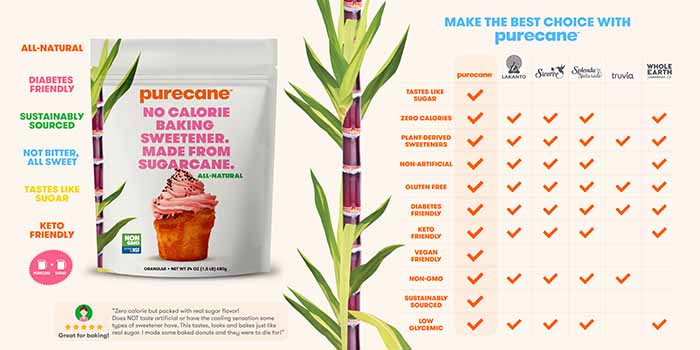 [5] Compare Purecane to other sweeteners. |
||
